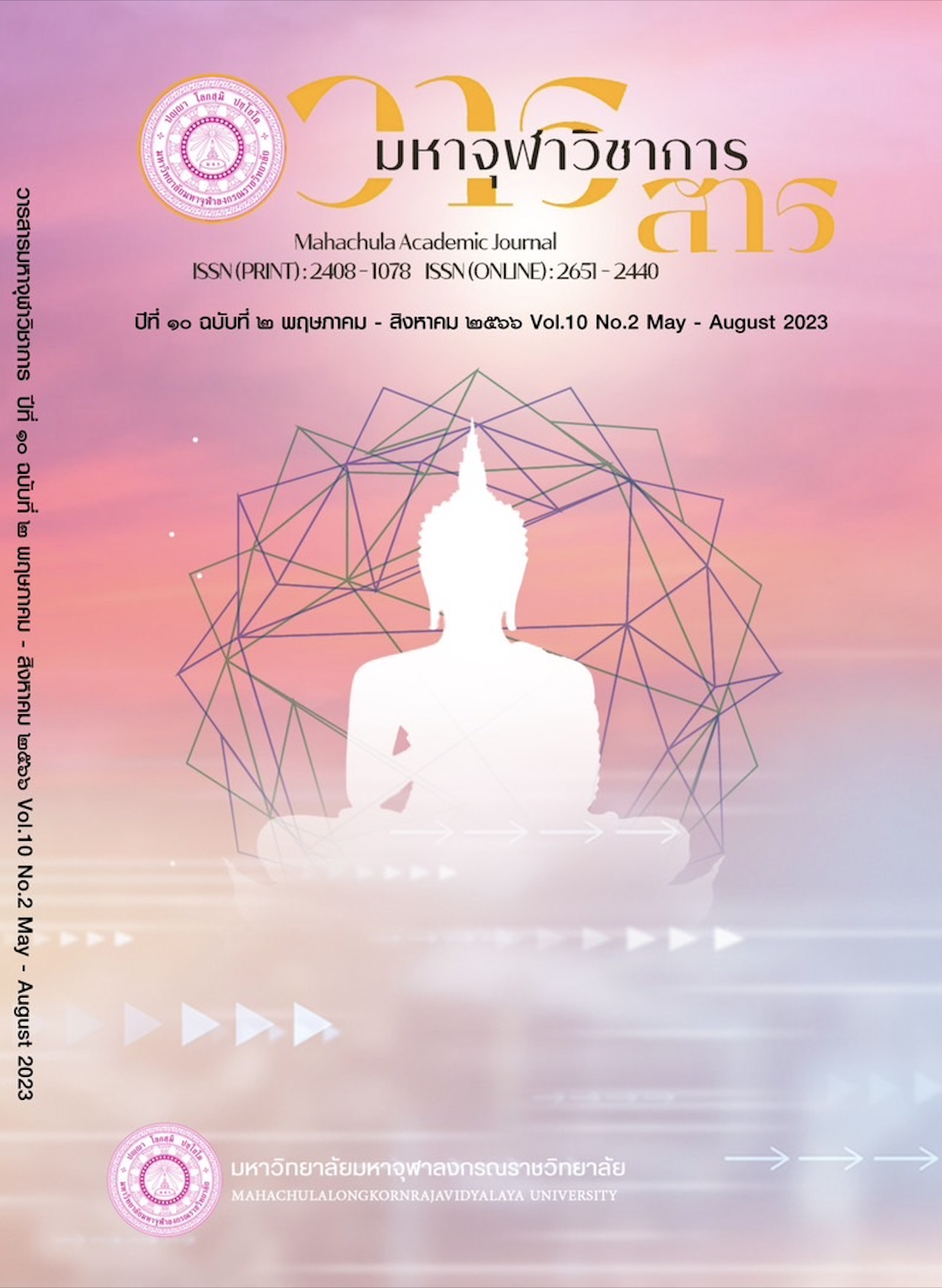An Approach for Promoting Buddhism Disciples In Khok Klai Village Phitsanulok Province
Main Article Content
Abstract
The study consisted of the following two objectives: (1) to explore the promotion of Buddhism by laypeople in Buddhist texts; and (2) to propose the guidelines for the promotion of Buddhist by laypeople at Khok Klai Village, Phitsanulok Province. The qualitative research approach was used in the field studies to interview monks and villagers in Khok Klai Village, as well as Buddhist scholars.
the following results are found: (1) The promotion of Buddhist by laypeople in Buddhist texts revealed that lay people are Buddhist devotees, whether they sponsor the four requisites, build permanent structures inside temples, or engage in Buddhist activities. The people that appear in Buddhist texts as role models for promoting Buddhism include Anathapindika, Visakha, etc. (2) The guidelines for promoting Buddhist by laypeople at Khok Klai Village, Phitsanulok Province are as follows: (1) On offering the four requisites, monks must perform their tasks thoroughly so that people would have faith and be willing to provide the requisites; (2) On building the permanent structures such as hall (sālā), monk’s lodging (kuti), the assembly hall (uposatha), monastery (vihāra), and the Buddha statues, all of which must be built based on the faith of laypeople. The key principles that must be established for laypeople who are willing to offer their requisites are that there must be a maintenance plan, a cleaning plan, and that everything must constantly be kept in order; and (3) On performing Buddhist activities, the abbots should lead monks and novices to chant both in the morning and evening, as well as organizing the activities on Buddhist festivals, such as Asalha Pūjā Day, Vesak Day, and Māgha Pūjā Day, so that people are encouraged to engage in Buddhist activities.
Article Details

This work is licensed under a Creative Commons Attribution-NonCommercial-NoDerivatives 4.0 International License.
References
พระพรหมคุณาภรณ์ (ป. อ. ปยุตฺโต). พจนานุกรมพุทธศาสน์ ฉบับประมวลศัพท์. พิมพ์ครั้งที่ ๑๕. กรุงเทพมหานคร: โรงพิมพ์ บริษัท สหธรรมิก, ๒๕๕๓.
มหาจุฬาลงกรณราชวิทยาลัย. พระไตรปิฎกภาษาไทย ฉบับมหาจุฬาลงกรณราชวิทยาลัย. กรุงเทพมหานคร: โรงพิมพ์มหาจุฬาลงกรณราชวิทยาลัย, ๒๕๓๙.
ราชบัณฑิตยสถาน. พจนานุกรมราชบัณฑิตยสถาน พ.ศ. ๒๕๕๔. พิมพ์ครั้งที่ ๒. กรุงเทพมหานคร: บริษัท ศิริวัฒนาอินเตอร์พริ้นท์ จำกัด (มหาชน), ๒๕๕๖.
วรินทร ทวีโชติชัยกุล และคณะ. “วิธีการส่งเสริมพระพทธศาสนาของอุบาสิกาสมัยพุทธกาล”. วารสาร มจร ปรัชญาปริทรรศน์. ปีที่ ๑ ฉบับที่ ๓ (กันยายน – ธันวาม ๒๕๕๙) : ๗๓.
คมชัดลึก. “อุบาสก-อุบาสิกา : คำวัด”. KomChadLuK Online. [ออนไลน์]. แหล่งที่มา: https://www.komchadluek.net [๑๔ กันยายน ๒๕๖๔].
เสฐียร ทั่งทองมะดัน. ประวัติศาสตร์พระพุทธศาสนา. (E-book Prasamut chedi District Public Library). หน้า ๔๓-๔๕. [ออนไลน์]. แหล่งที่มา: https://pubhtml5.com/wrfu/eanu [๑ สิงหาคม ๒๕๖๔].


